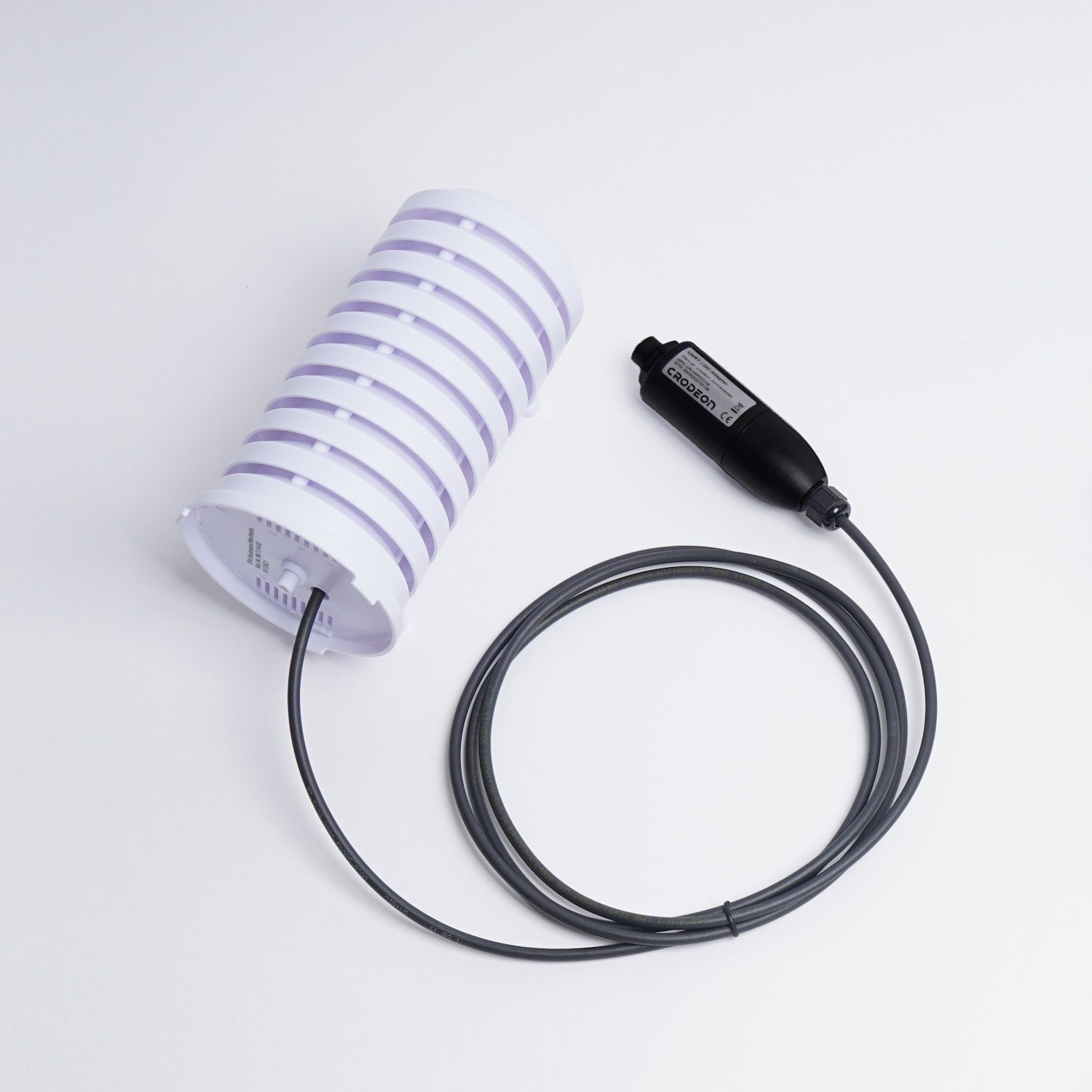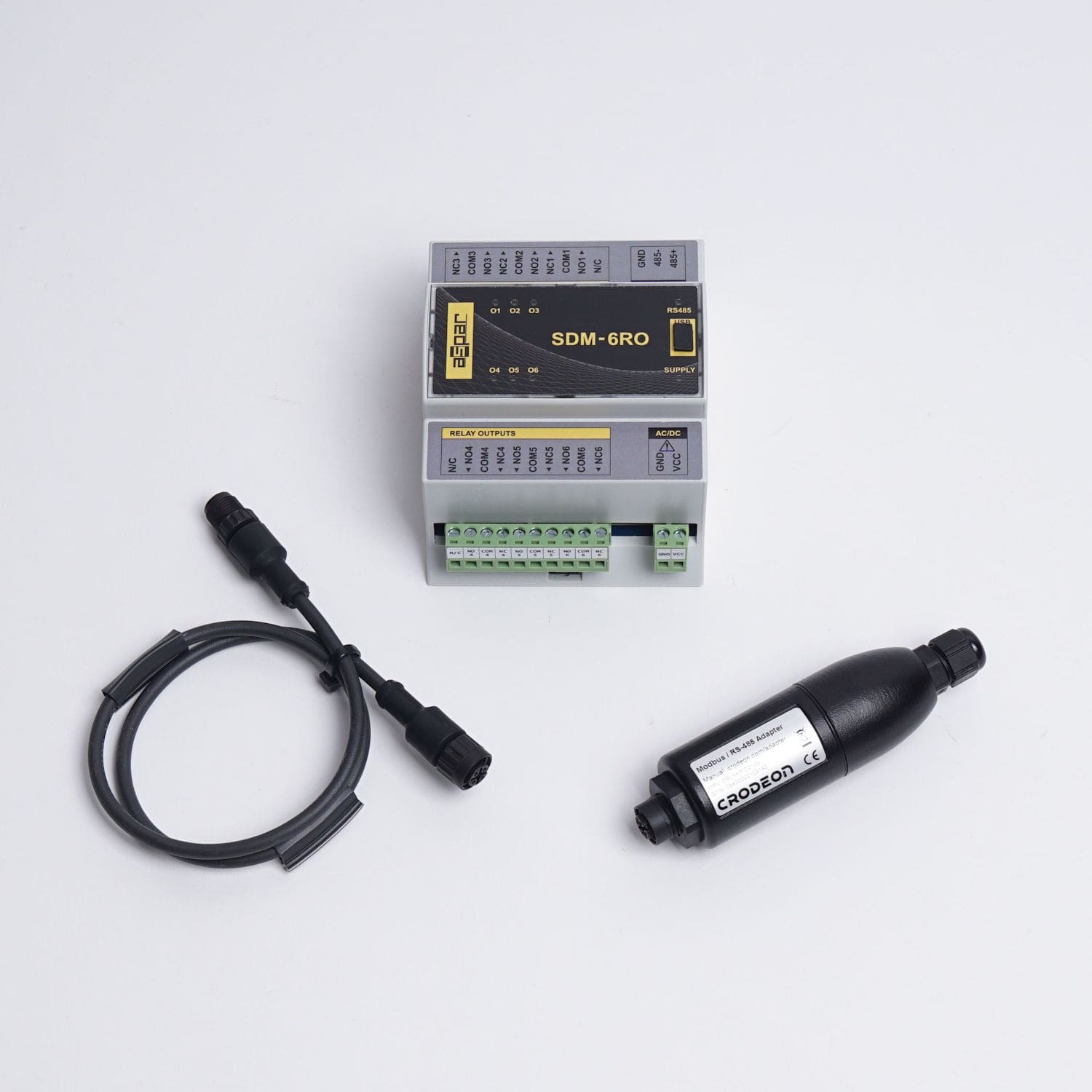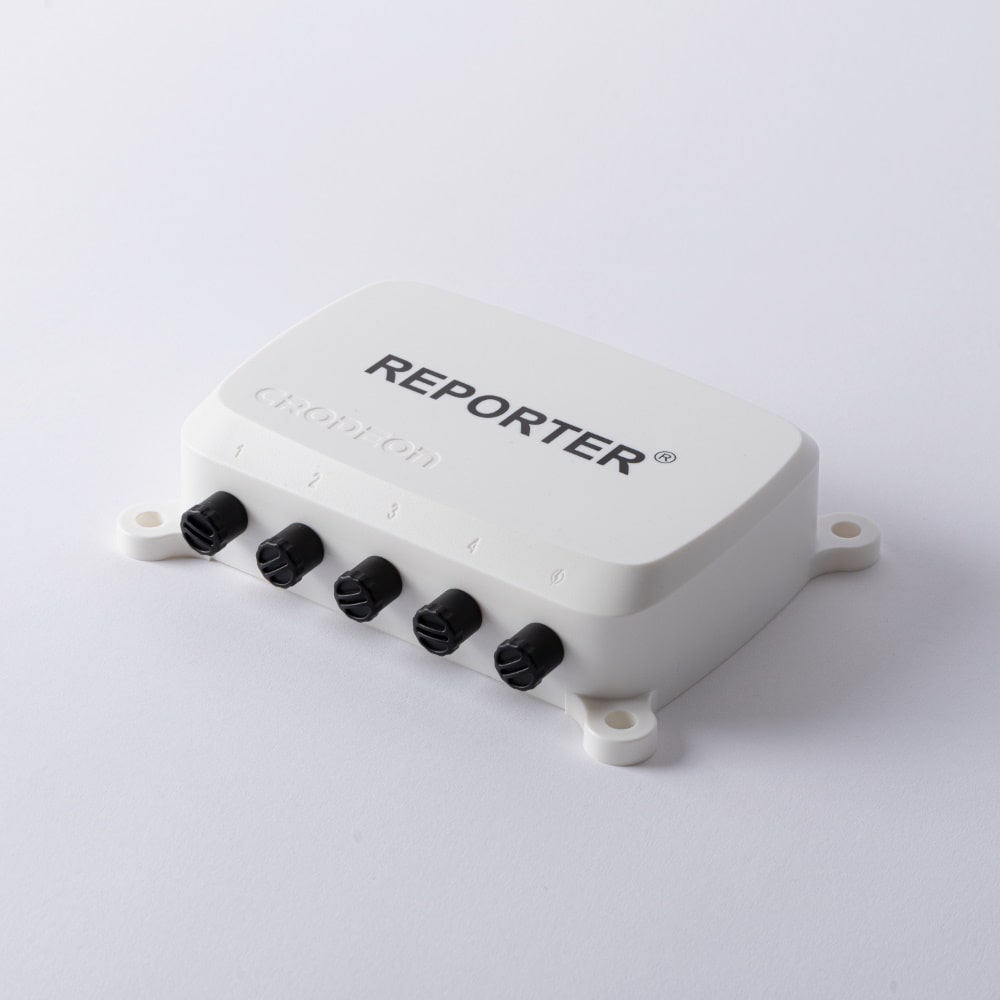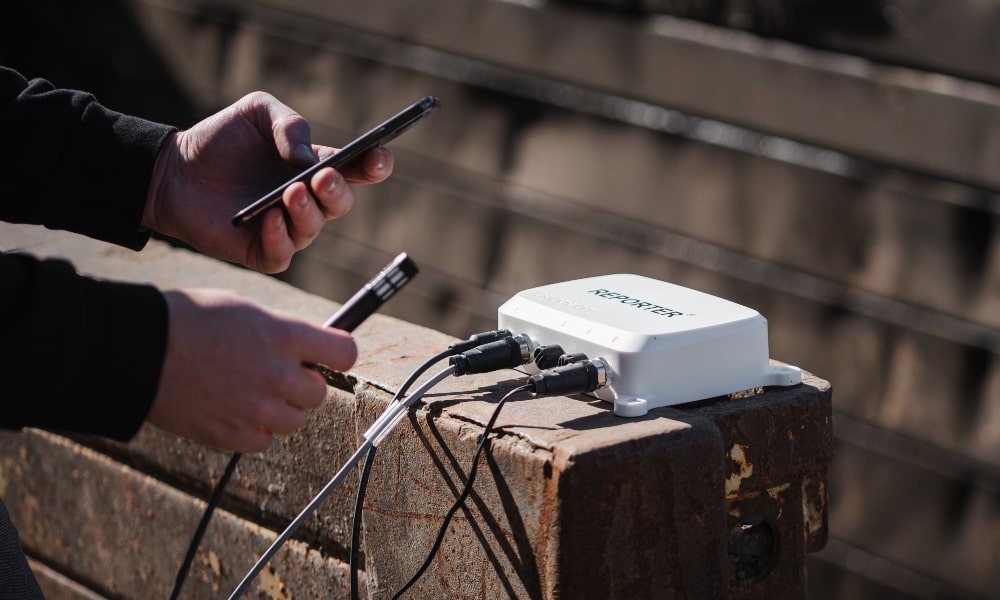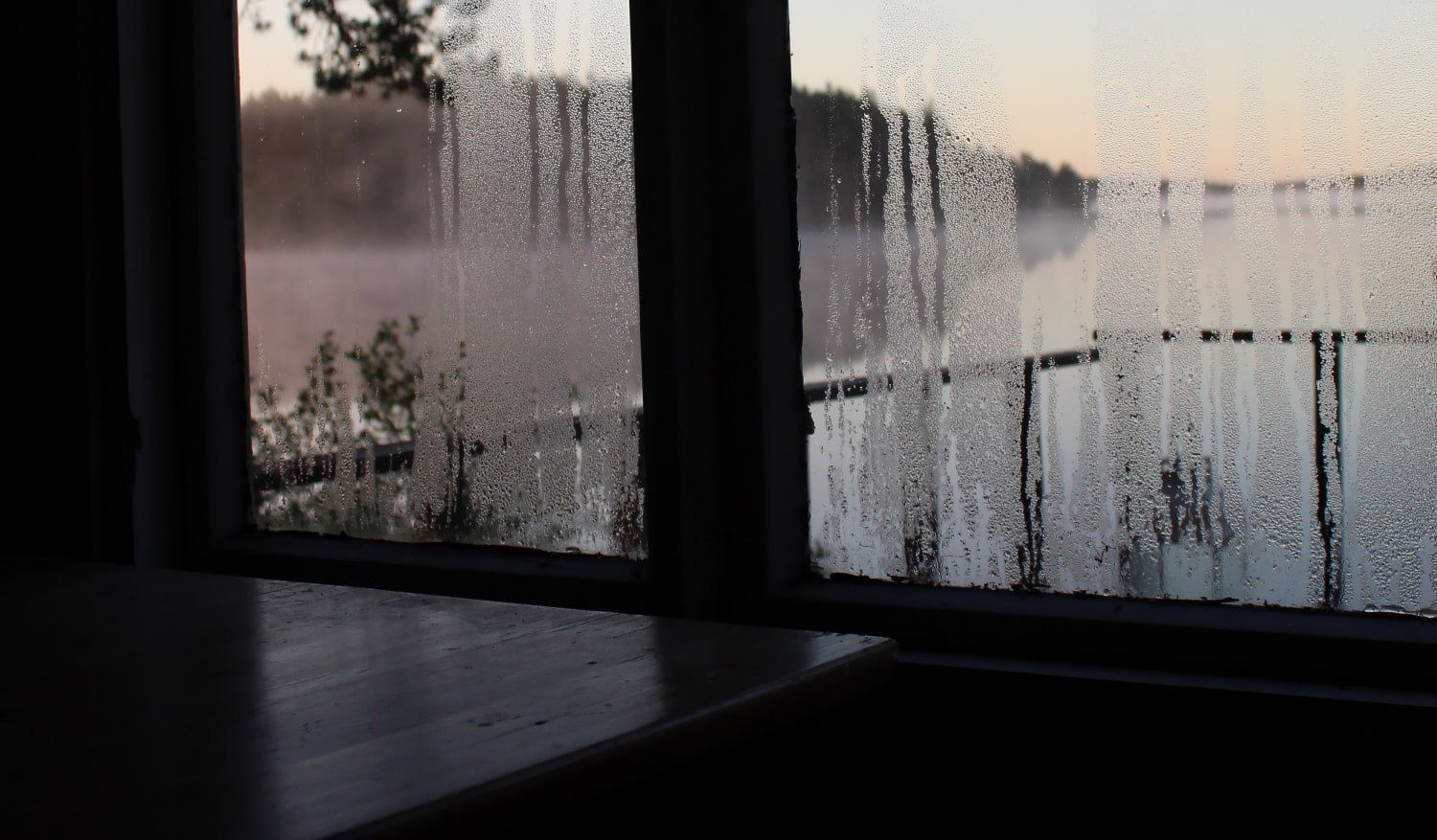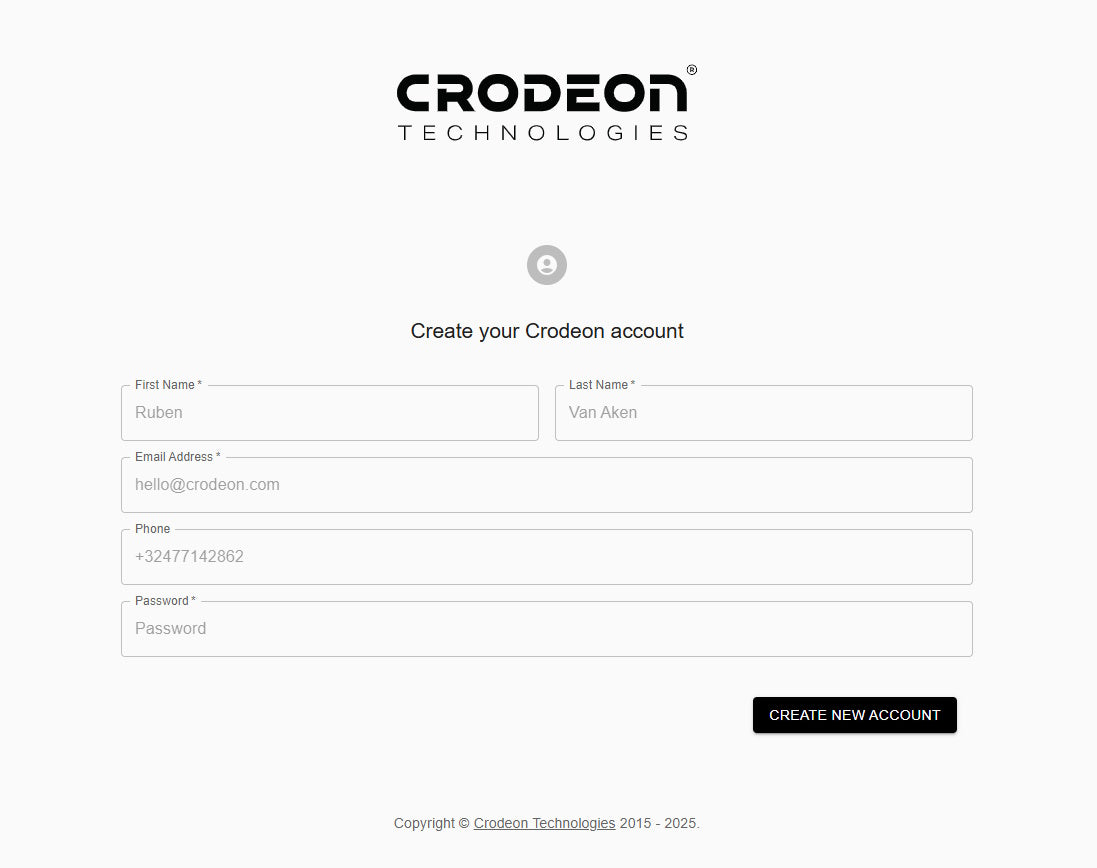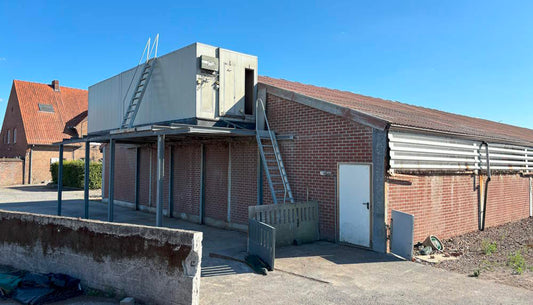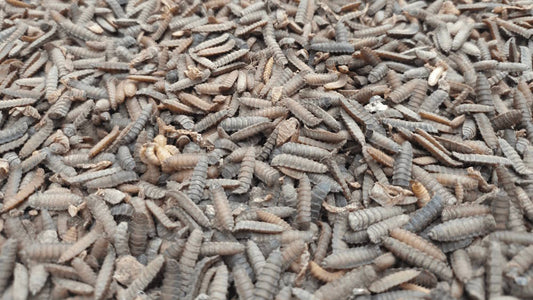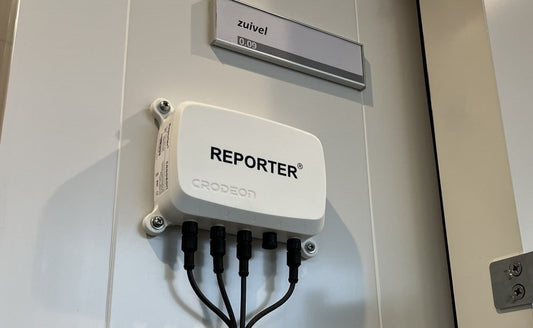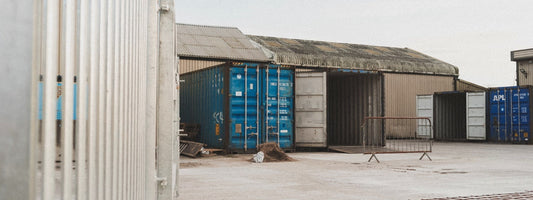Surveillance de la température et de l'humidité relative des archives

Lorsque vous possédez une collection inestimable d'objets et de documents papier, vous souhaitez naturellement les conserver en toute sécurité. La surveillance de la température et de l'humidité relative des archives vous aide à assurer la sécurité de vos archives en garantissant la conservation des documents papier.
Quelles sont les causes de la dégradation du papier ?
Le stockage des documents papier est menacé par des facteurs environnementaux tels qu’une humidité relative et une température élevées, car ceux-ci accélèrent la détérioration des documents papier.
Sous l'effet de la chaleur et de l'humidité, certains processus chimiques se déclenchent. Le pH du papier peut changer et se dégrader. Des parasites et des moisissures peuvent également commencer à se former.
Pour éviter tout dommage, l’ environnement de stockage est généralement surveillé et contrôlé .
Il est évident que le stockage des documents d'archives doit se faire dans un endroit spécialisé. Les endroits où la chaleur, l'humidité ou les températures fluctuantes sont élevées, comme les garages, les greniers ou les sous-sols, ne sont pas adaptés. Une température et une humidité relative constantes sont essentielles à la conservation des livres et du papier.
Quel doit être le taux d'humidité pour le stockage des archives ?
Pour optimiser le stockage des documents d'archives, les experts recommandent une humidité relative de 30 à 55 %. Cela évite la formation de moisissures et crée un environnement dans lequel les insectes sont moins susceptibles de se développer.
Pour atteindre ces niveaux, il peut être utile d’installer un déshumidificateur et une ventilation adéquate.
L' Institut canadien de conservation va jusqu'à dire ce qui suit :
« Les recherches soutiennent la théorie selon laquelle à 20 °C et 30 % d’humidité relative, la durée de vie d’un papier à base de pâte de bois typique est deux fois plus longue qu’à 20 °C et 50 % d’humidité relative. »
Si vous souhaitez que vos objets et documents papier durent, le stockage au sec est définitivement essentiel.

Qu'arrive-t-il au papier en cas de forte humidité ?
Lorsque vous stockez des documents papier dans un environnement humide, le risque de voir des moisissures, des champignons et des insectes se développer sur votre collection est élevé. Lorsque des moisissures, des champignons ou des insectes se nourrissent de vos documents, le matériau d'origine est digéré et ce qui a été épargné sera taché par des excréments d'insectes ou des restes de moisissure elle-même.
Les dommages causés par l'humidité, comme la texture ondulée et mousseuse typique du papier séché, sont un autre exemple de dommages irréversibles. Les réactions chimiques sont également plus susceptibles de se produire à l'intérieur des documents papier, provoquant une modification du pH des documents papier et autres. Cette réaction est également connue sous le nom d'hydrolyse acide.
Que se passe-t-il lorsque l’humidité est trop faible pour la conservation des documents papier ?
Même si la durée de vie du papier tend à augmenter lorsque l'humidité relative est faible, le stockage de documents papier dans un environnement de stockage dont l'humidité relative est trop faible est dangereux. La manipulation de documents trop secs exige la plus grande prudence.
Lorsque l'humidité relative est inférieure à 15 % dans un document papier, le matériau peut devenir cassant et se fissurer ou se casser. Cette dessiccation entraîne une réduction significative de la flexibilité des dossiers papier. Il peut devenir difficile d'ouvrir des livres ou de dérouler des rouleaux (parchemins). De plus, les dossiers peuvent même commencer à rétrécir ou provoquer la séparation des documents adjacents.

Quelle est la température idéale pour les archives ?
Plus les températures de stockage de vos archives sont basses, plus la conservation des livres et du papier est optimale. Cette plage de températures basses ralentit les processus de détérioration qui se produisent naturellement avec le vieillissement du papier.
La température générale recommandée est comprise entre 16 et 20°C .
Comment la température affecte-t-elle le papier ?
La chaleur accélère la détérioration par le biais du processus d'oxydation . Au cours de l'oxydation, certains composés chimiques se forment et font jaunir ou brunir le papier. Au cours de l'oxydation, le pH du papier diminue également, ce qui accélère l'ensemble du processus de détérioration. Les rayons UV du soleil et de l'éclairage jouent également un rôle dans l'oxydation du papier.
Comment la lumière met en danger le stockage archivistique des photographies et autres documents papier
La lumière (du soleil) est connue pour décolorer les couleurs et dégrader certains matériaux. Il n'est donc pas surprenant que le papier et les photographies puissent souffrir de la lumière. Certains pigments s'estompent plus rapidement que d'autres, ce qui rend parfois les documents colorés méconnaissables.
Les dommages dus à l’exposition à la lumière sont irréversibles et s’aggraveront chaque fois qu’un document ou un fichier quitte le stockage de documents papier noirci.
Autres dangers pour la conservation des documents papier
Bien que la température, l’humidité relative et la lumière du soleil soient les principales sources de préoccupation lors du stockage de documents papier, d’autres facteurs peuvent également endommager les objets en papier.
- Polluants chimiques : certains gaz comme le dioxyde de soufre, les oxydes d’azote, les peroxydes et l’ozone peuvent catalyser des réactions chimiques qui abaissent le pH du papier ou d’autres matières organiques comme le cuir.
- Fuites d'eau : lorsqu'une fuite est présente dans ou à proximité du lieu de stockage, cela peut certainement affecter négativement l'environnement de stockage. Les toits, fenêtres, canalisations qui fuient ou les zones sujettes aux inondations ou à la montée des eaux souterraines doivent toujours être évités.
- Saleté et poussière : les grosses particules peuvent avoir un effet abrasif sur les documents, ce qui nuit à la qualité et à la durée de vie desdits objets.

Moyens d'assurer la conservation des documents papier
Pour conserver avec succès les archives papier, les dossiers, les documents, les livres et autres objets, le climat intérieur doit être constamment surveillé. Les archivistes doivent mesurer et enregistrer en permanence les conditions au sein de la collection d'archives pour garantir la sécurité du stockage.
Lorsque les conditions environnementales dépassent les limites de température et d’humidité relative décrites ci-dessus, la climatisation doit être activée pour garantir un environnement stable.
Enregistrement manuel des données pour mesurer la température et l'humidité relative des archives
Pour surveiller et mesurer le climat intérieur dans une archive ou un entrepôt, plusieurs méthodes manuelles peuvent être utilisées. Cependant, elles peuvent être chronophages, exigeantes en main-d'œuvre, coûteuses et facilement oubliées . En outre, il y a le problème de la numérisation des données. La conservation de ce journal de données manuel sur papier signifie qu'il peut également être endommagé ou égaré.
Il existe plusieurs façons d'effectuer une mesure manuelle, notamment en utilisant des bandelettes d'humidité, des appareils de mesure portables ou des thermomètres.
Enregistreurs de données numériques automatiques pour la conservation des livres et du papier
Une bonne façon d'éviter de perdre du temps lors des mesures est d'installer des enregistreurs de données automatiques. Lorsque ces appareils de mesure disposent également d'un moyen d'envoyer automatiquement les données collectées vers un stockage cloud, vous pouvez simultanément éliminer tous les journaux de données physiques (papier).
Un tel système de journalisation automatique vous aidera rapidement à économiser du temps et de l'argent tout en préservant la sécurité de votre collection .
Si vous choisissez d'installer un système de surveillance et d'alerte de température et d'humidité, vous pouvez même définir des alarmes. De cette façon, vous recevrez une notification d'alarme lorsqu'un certain seuil a été dépassé. Par exemple, lorsque l'humidité dépasse 55 % ou que la température dépasse 20 °C. Un tel enregistreur de données est également appelé système de surveillance à distance .

Contrôle climatique ou contrôle environnemental de la température et de l'humidité relative des archives
Un système de surveillance à distance pour vous alerter lorsque votre environnement de stockage n'est pas optimal est une chose. Agir sur vos notifications d'alarme en activant la climatisation intérieure ou les déshumidificateurs en est une autre.
Une ventilation adéquate contribue également à la conservation des documents papier. Elle permet d'évacuer les gaz nocifs de votre espace de stockage, car des concentrations élevées peuvent endommager les objets.
Pour optimiser vos archives, il serait judicieux d'installer un système permettant de contrôler à distance votre environnement intérieur . Un tel stockage à température et humidité contrôlées peut être réalisé en installant un système de surveillance à distance qui utilise un module de sortie relais ou une API REST .
Un module de sortie relais vous permet d'allumer et d'éteindre n'importe quelle machine connectée, d'un simple clic sur un bouton virtuel. Cela signifie que vous pouvez contrôler un système de ventilation, des déshumidificateurs ou des refroidisseurs, le tout via votre smartphone, par exemple.
Ce système peut être d’une aide précieuse, en particulier dans les climats tropicaux où les températures élevées et l’humidité élevée sont courantes.
Le système IoT dont les archivistes ont besoin
Monica Maceli, du Pratt Institute, a mené une étude pour déterminer ce dont les archivistes avaient réellement besoin dans un système de surveillance pour le stockage de leurs documents d'archives. Les résultats de cette étude sont les suivants :
- capteurs de température et d'humidité avec une grande précision de capteur
- la possibilité de fixer des capteurs supplémentaires pour mesurer la lumière (lux), les fuites d'eau, les inondations, etc.
- journalisation pour conserver des traces du moment où quelqu'un est entré dans l'espace de stockage
- un système tout-en-un abordable et facile à recharger
- capacités sans fil avec accès à distance via une application Web
- enregistrement et visualisation des données au sein du même système
- accès aux données historiques pour pouvoir analyser ou baser des calculs (de risque)
- un système de surveillance et d'alerte de température et d'humidité qui vous avertit instantanément
Tout est automatique et digitalisé, tout en restant efficace et simple d'utilisation ! Simple d'utilisation signifie que le système peut être installé et utilisé par une personne sans connaissances techniques préalables. Cela signifie également qu'aucun personnel technique ni aucune maintenance ne sont nécessaires pour maintenir le système en fonctionnement.

Un système de surveillance et d'alerte de température et d'humidité
Les facteurs environnementaux tels que l'humidité relative et la température, mais aussi la lumière et les fuites d'eau, peuvent endommager vos précieux fichiers et objets papier. Un stockage à température et humidité contrôlées avec un système de surveillance à distance vous aide à assurer la sécurité du stockage de vos documents papier.
Nous avons développé un tel système. Reporter est un appareil de capteur mobile et autonome qui vous permet de mesurer et de surveiller tout ce dont vous avez besoin.
Journaliste:
- Fonctionne sur les données cellulaires.
- Diffuse ses mesures en direct vers le cloud.
- Dispose d'une plateforme cloud accessible 24h/24 et 7j/7 appelée Crodeon Dashboard, qui est une application Web compatible avec PC, tablette et smartphone.
- Dispose de sa propre visualisation de données et de données historiques (via l'exportation de données) sur le tableau de bord.
- Permet de connecter jusqu'à quatre capteurs professionnels de haute précision par appareil tels qu'un : capteur de température , un capteur de température-humidité , un capteur de lux, un capteur de pression , un capteur de niveau submersible , un interrupteur de fin de course et bien plus encore.
- Vous permet de connecter un module de sortie relais, qui peut activer ou désactiver n'importe quelle climatisation en appuyant sur un bouton du tableau de bord.
- Vous permet de définir des notifications d'alarme en fonction de seuils personnalisables.
- Envoie ces notifications d'alarme sur votre téléphone (SMS ou appel) ou par e-mail. Avec l'option d'une alarme en cascade, ce qui signifie que si la première personne de la file ne répond pas, la personne suivante recevra une notification d'alarme.
- Dispose d'intervalles de mesure personnalisables (30 secondes à 2 heures).
- Il est compatible avec l'alimentation secteur et l'énergie solaire. De plus, il envoie une notification d'alarme lorsque la batterie est faible. Vous pouvez même définir des notifications d'alarme en cas de panne de courant. Sur le Crodeon Dashboard , vous pouvez voir si l'appareil doit être rechargé.
- Il s'agit d'un module de capteur plug & play conçu pour être aussi convivial que possible. Cela signifie qu'aucune connaissance technique préalable n'est nécessaire pour installer et utiliser Reporter vous-même.
Enfin, les données de mesure de Reporter sont accessibles via une API REST. Cela signifie que toutes les données peuvent être automatiquement importées dans votre propre logiciel d'enregistrement de données. Une API peut également être utilisée pour activer automatiquement la climatisation, lorsque vous pouvez la programmer ou demander à quelqu'un de la programmer pour vous.

Réception et transfert de données
Le stockage optimal des documents papier se fait dans un endroit frais, sec et sombre. Loin des vibrations dues à la circulation, par exemple, car celles-ci peuvent endommager les documents en raison des frottements. Lorsque vos archives sont situées dans un endroit proche d'un bunker, la réception cellulaire peut être un problème.
Cela signifie que vous ne pourrez pas monter Reporter à l'intérieur de votre stockage à température et humidité contrôlées. Ne vous inquiétez pas ! Nous avons une solution : nos câbles de capteur peuvent être rallongés pour répondre à vos besoins. Cela vous donne la possibilité de monter Reporter sur un mur extérieur, tandis que vos câbles de capteur peuvent toujours atteindre les profondeurs de vos archives.
L’énorme avantage de l’utilisation du réseau GSM est qu’une connexion WiFi stable n’est pas nécessaire pour un streaming de données sans faille.
Garder le passé comme une partie du futur
Protégez vos documents et objets papier en veillant à ce que le stockage des archives de photographies et autres soit surveillé par un système de surveillance à distance. Reporter vous aidera volontiers à surveiller la température et l'humidité lorsque vous stockez des documents papier.
Vous avez encore des questions concernant notre système de surveillance et d'alerte de température et d'humidité ? N'hésitez pas à nous contacter !
FAQ
Quelle est la température et l’humidité optimales pour stocker des documents papier ?
Pour le stockage des papiers d'archives, il est recommandé de maintenir une température comprise entre 16 et 20 °C et une humidité relative comprise entre 30 et 55 %.
En savoir plus
Sources
- “Temperature, Relative Humidity, Light, and Air Quality: Basic Guidelines for Preservation”
Northeast Document Conservation Center
Ogden, Sherelyn. 1999.
- “Internet of things in the archives: novel tools for environmental monitoring of archival collections”
Records Management Journal
Maceli, Monica. 2020.
- “Environmental Monitoring and Control at National Archives and Libraries in Eastern and Southern Africa.”
Libri
Ngulube, Patrick. 2005.
- “Environmental Guidelines for the Storage of Paper Records”
NISO Press
Wilson, William K. 1995.

